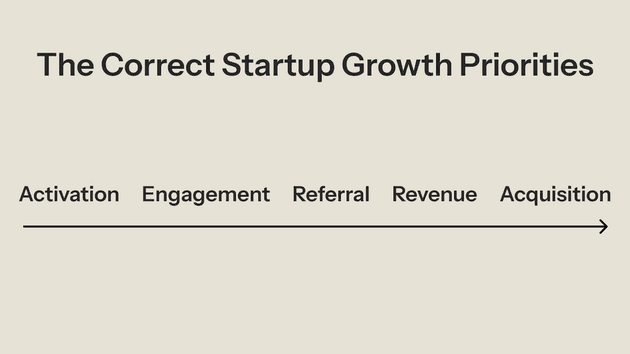A startup creates sustainable growth by focusing on the five growth factors in the correct order: Activation > Engagement > Referral > Revenue > Acquisition. Don't increase spending on ads before solving your onboarding flow.
Podcast: The original growth hacker reveals his secrets | Sean Ellis (author of “Hacking Growth”)
When startups fail to grow, oftentimes the instinct is to spend more on ads and marketing. But Sean Ellis, one of the most influential operators in startup growth who coined the term "growth hacking" and the Sean Ellis Test, says that's the last place to look.
He believes you should tackle startup growth in this exact five-step order: Activation, Engagement, Referral, Revenue, and Acquisition.
Always start with activation. Make sure users perceive core value quickly and deliver the aha moment in the onboarding flow. For example, LogMeIn grew its core usage from 5% to 50% in three months by pausing everything and focusing on onboarding.
Next, improve engagement by reinforcing product value and identifying a meaningful North Star Metric. For example, tools like the Hooked Habit Model can help drive habits.
The third step is referral. Dropbox's referral mechanism worked because people already loved it. Incentives helped, but they weren't the reason it spread.
The fourth is revenue model. If users love your product and are willing to share it with their friends, ensure that monetization reflects real value delivered.
Only if you have solved the above four steps, then tackle acquisition. If earlier steps are weak, acquisition won't work well or scale affordably.
My takeaway from Sean Ellis's five steps: if you prioritize these growth factors in the wrong order, you are always creating a leaky bucket. Acquiring 10 users but with terrible activation will just churn all ten of the users.
It's interesting to see a growing school of thought in Silicon Valley focus on marketing way before solving the first four steps. I'm bearish on that even if they are playing the game to occupy mental mindshare.
